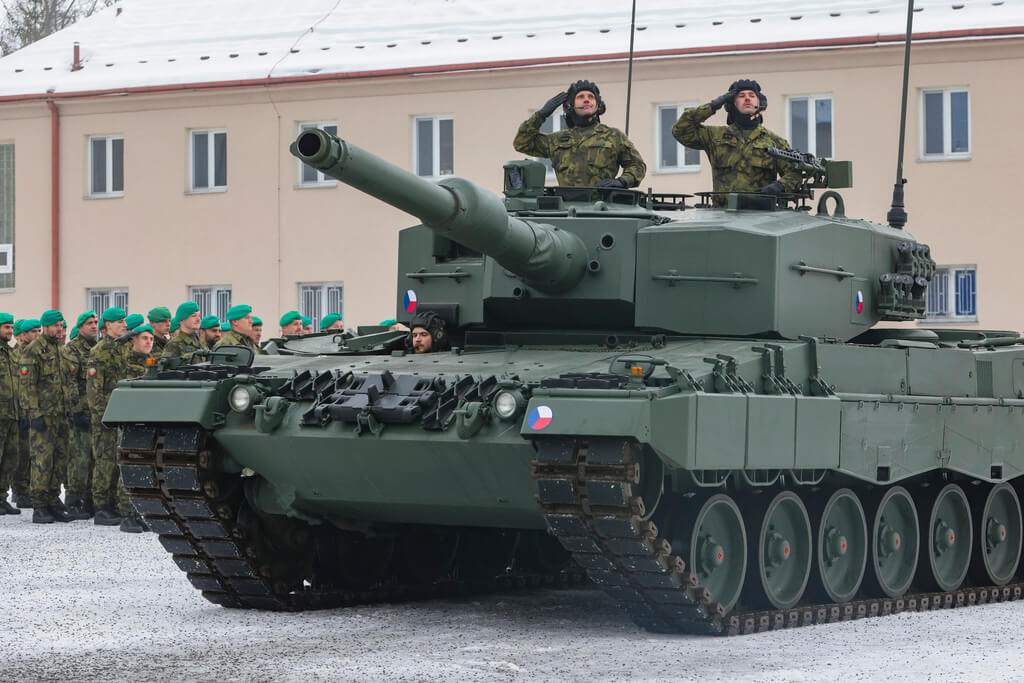Thanks to the Ringtausch programme initiated by Germany starting in 2022, some countries were encouraged to hand over some of their own material, which would otherwise have been very unlikely to find its way to Ukraine.
Slovenia, for example, was encouraged to supply 28 significantly modernised M-55S MBTs to Ukraine. In return, Germany financed the delivery of 40 HX 8×8 trucks including 5 tank containers to Slovenia.
Today, the Czech Ministry of Defence announced that it has signed another Ringtausch agreement with Germany. A step that was to be expected. Back in February 2024, the Czech Ministry of Defence announced that the German side had proposed such a move and that talks were underway.
In fact, this is not the first time that Germany and the Czech Republic have concluded such an agreement. Back in 2022, it was decided that Germany would finance and supply 14 Leopard 2A4 MBTs with ammunition and spare parts and one Bergepanzer 3 ARV with spare parts as compensation for the delivery of 20 T-72M1 MBTs to Ukraine.
Now the Czech Republic is actually receiving the same package again. This increases the deliveries to the Czech Republic financed by Germany to 28 Leopard 2A4 MBTs and 2 Bergepanzer 3 ARVs.
The first Leopard 2A4 is to be delivered by the end of the year. The remaining 13 main battle tanks are to follow by April 2025, while the Bergepanzer 3 is scheduled to follow by early 2026.

The deliveries announced today are very likely not a compensation for future deliveries, but for material that has already been delivered to Ukraine. During the first Ringtausch, Germany compensated Czechia for the delivery of 20 T-72M1 MBTs.
What was compensated the second time remains to be seen, but it is likely to be roughly the same. Excluding the already compensated deliveries, the Czech Republic has delivered another 62 T-72M1 MBTs to Ukraine, which are very likely to be considered for compensation.
The biggest negative point of the Ringtausch programme has always been that modern material from Germany does not go directly to Ukraine, even though it is most needed there. However, these agreements were concluded at a time when Germany, for example, did not want to supply its own IFVs and MBTs to Ukraine.
Now, of course, one might think, why are we again supplying Leopard 2A4s to the Czech Republic for equipment that has already been delivered, instead of supplying the tanks directly to Ukraine? An understandable thought, but there is one thing we have to think about before judging.
In a press statement published on the 12th of August, the German defence company Rheinmetall, which is to supply the armoured vehicles to the Czech Republic, states that the main battle tanks come from its own stocks, which were purchased in various user states.
It is very likely that these are partly the former Swiss Panzer 87 MBTs, of which Germany has bought back 25. However, one of the Swiss conditions for the purchase was that these tanks would not be transferred to Ukraine.
Instead, Germany plans to first let Rheinmetall repair them as some of them are in bad shape and then pass them on to EU and NATO partners who have transferred their own Leopard 2 MBTs to Ukraine.
This would make the Czech Republic the first country to benefit from the German-Swiss deal. However, the statement “various user states” also means that some tanks do not originate from former Swiss stocks and could therefore have been delivered directly to Ukraine.
It’s difficult to imagine why this is still happening in 2024. This is a criticism that the German government has to put up with.
If you liked this post, consider following me on X, Bluesky, or Telegram. If you like, you can also leave me a tip on Ko-fi.
Changelog
- 12th of August 2024 — Following the publication of a press release by Rheinmetall, I have added the information available there to the article


